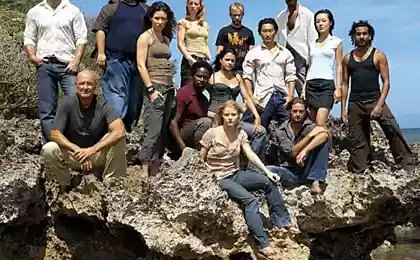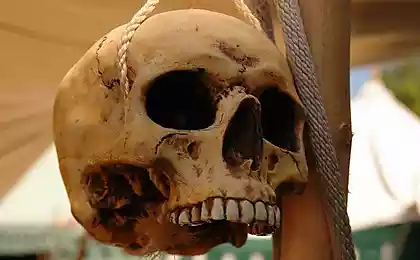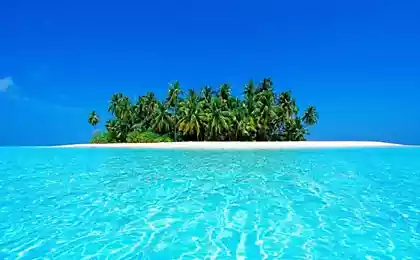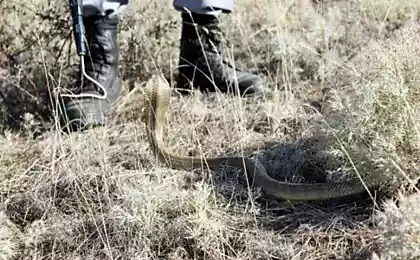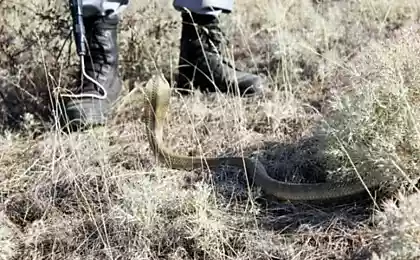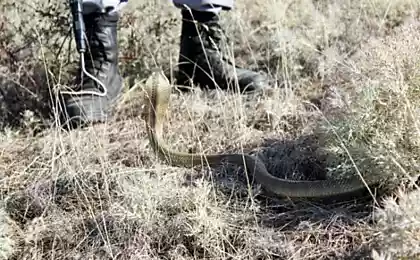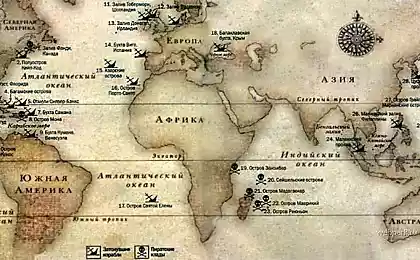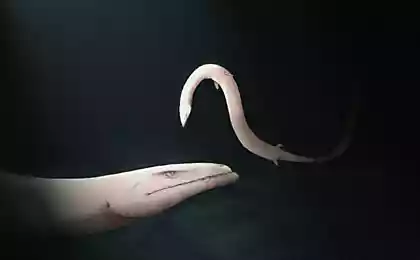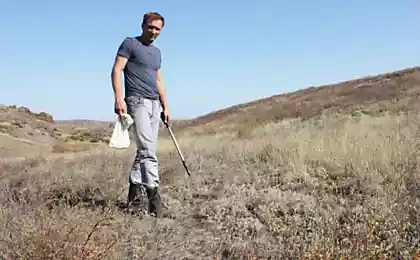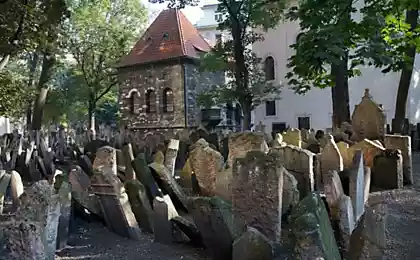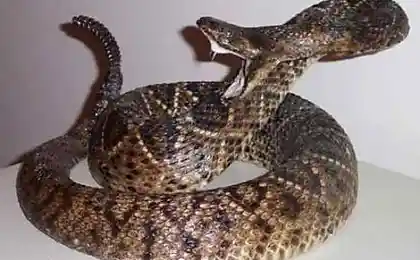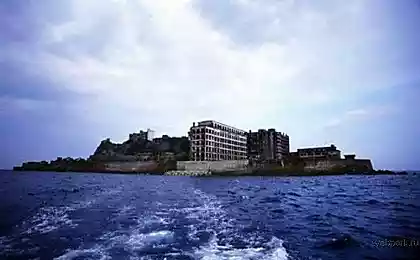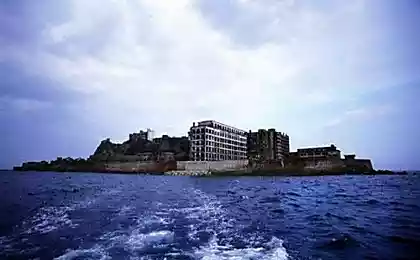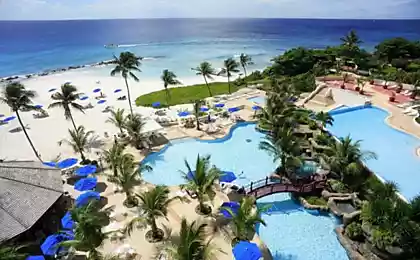1094
Snake Island Ilha da Queimada Grande
Ilha da Queimada Grande is not just known as Snake Island. The island area of 430, 000 square meters is located approximately 33 km from the coast of the State of São Paulo, Brazil. There are many snakes inhabit, including the local variety of the golden viper (Bothrops insularis) - one of the most poisonous snakes in the world. According to estimates in 2015, the island has about 4 million snakes, an average of one snake on the 75 square meters of Ilha da Queimada Grande. Local folklore is rich with stories of terrible deaths when the snake attacked landers fishermen, as well as family ruined lighthouse keeper.
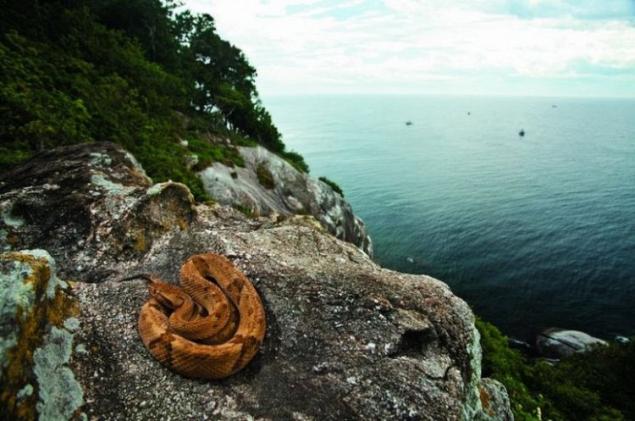
Officially, there are no reports of people bitten by a viper gold. Thus, the toxicity of its venom in humans could not be verified, but others kopegolovye snakes are responsible for more deaths than any other group of snakes in North and South America. Bite kopegolovoy snakes in seven percent of cases resulting in fatal proceed, and even with treatment the victim may still die. Death is usually caused by bleeding in the gut, renal failure, cerebral hemorrhage and severe necrosis of the muscular tissue. Yad actually melts the flesh and tissue, entering the human body. Tests have shown that the golden poison kopegolovoy viper has the fastest action in the nature of vipers.
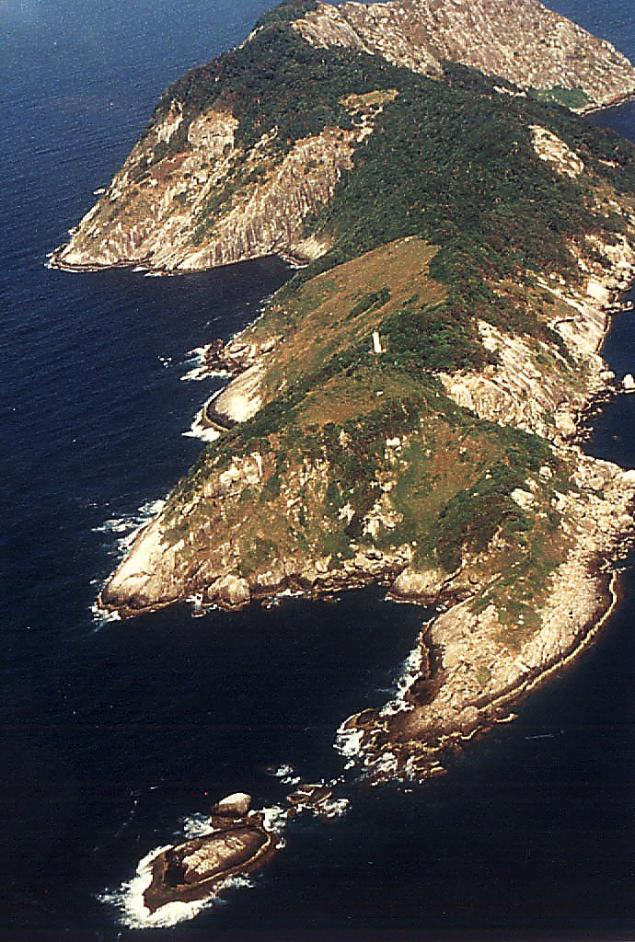
Snakes on Ilha da Queimada Grande were originally the same species, as well as on the mainland, when the island and the mainland were connected by land. Between 10 000 and 12 000 years ago when the sea level rose, Ilha da Queimada Grande was isolated from the mainland by Brazil, and the population of snakes has been conserved. No small mammals on which they have traditionally hunted snakes have adapted to life in the trees, because their main source of food became a bird. Snake-islanders learned to bite the birds high in the trees, and their venom has become five times more powerful than that of counterparts on the mainland. So they were able to kill birds quickly, before they have time to fly. When there is no passing bird, these poisonous snakes fill yourself lizards, centipedes, slugs and frogs.
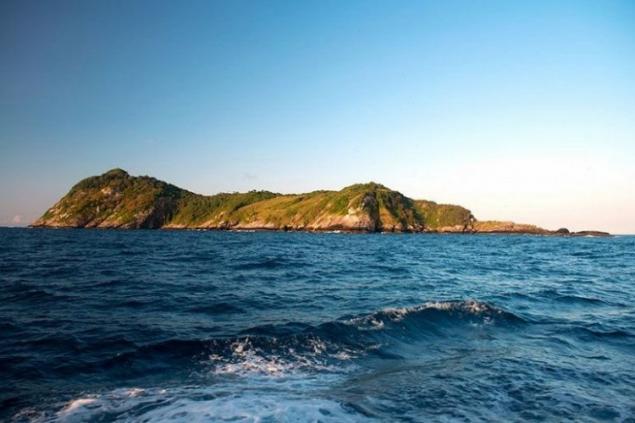
Currently, the island is closed to people and the Brazilian government strictly controls all visitors. The visitors - mainly biologists and researchers who receive special permission to study gold vipers. The Brazilian Navy also conducts an annual stop on the island for maintenance of the lighthouse, which since the 1920s has been automated.
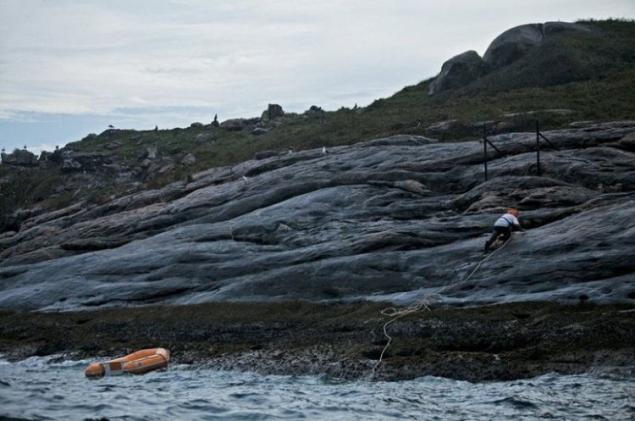
Despite the dangers, smugglers World Wildlife their way to the island to hunt for dangerous snakes that bring high profit on the black market.
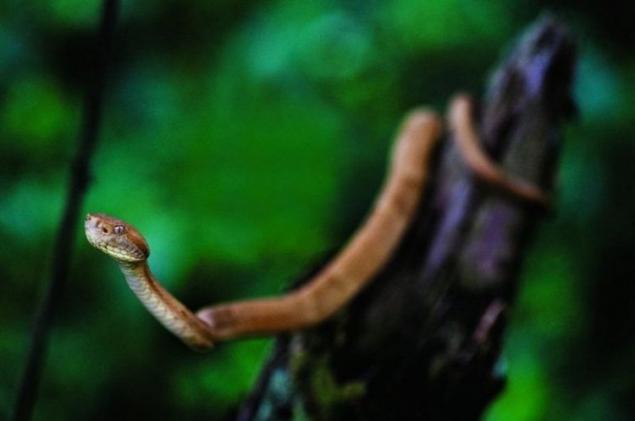
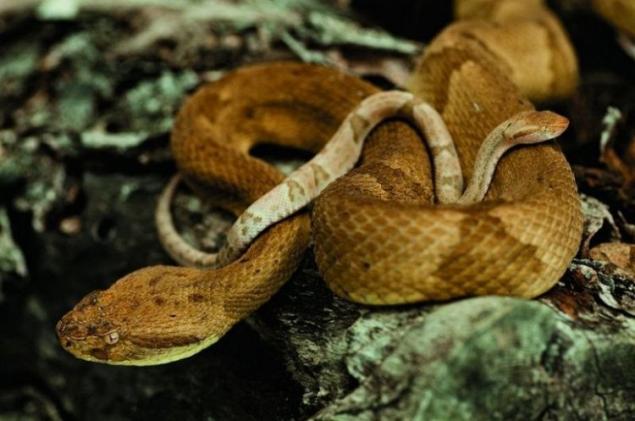
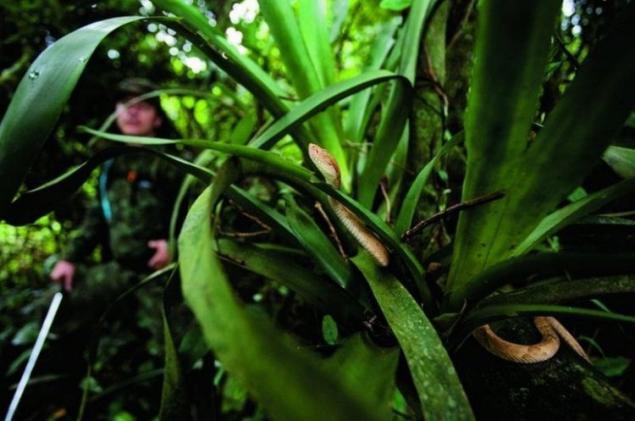
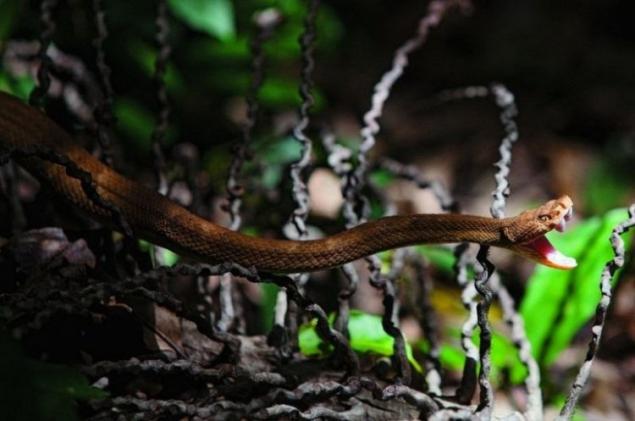

Officially, there are no reports of people bitten by a viper gold. Thus, the toxicity of its venom in humans could not be verified, but others kopegolovye snakes are responsible for more deaths than any other group of snakes in North and South America. Bite kopegolovoy snakes in seven percent of cases resulting in fatal proceed, and even with treatment the victim may still die. Death is usually caused by bleeding in the gut, renal failure, cerebral hemorrhage and severe necrosis of the muscular tissue. Yad actually melts the flesh and tissue, entering the human body. Tests have shown that the golden poison kopegolovoy viper has the fastest action in the nature of vipers.

Snakes on Ilha da Queimada Grande were originally the same species, as well as on the mainland, when the island and the mainland were connected by land. Between 10 000 and 12 000 years ago when the sea level rose, Ilha da Queimada Grande was isolated from the mainland by Brazil, and the population of snakes has been conserved. No small mammals on which they have traditionally hunted snakes have adapted to life in the trees, because their main source of food became a bird. Snake-islanders learned to bite the birds high in the trees, and their venom has become five times more powerful than that of counterparts on the mainland. So they were able to kill birds quickly, before they have time to fly. When there is no passing bird, these poisonous snakes fill yourself lizards, centipedes, slugs and frogs.

Currently, the island is closed to people and the Brazilian government strictly controls all visitors. The visitors - mainly biologists and researchers who receive special permission to study gold vipers. The Brazilian Navy also conducts an annual stop on the island for maintenance of the lighthouse, which since the 1920s has been automated.

Despite the dangers, smugglers World Wildlife their way to the island to hunt for dangerous snakes that bring high profit on the black market.




